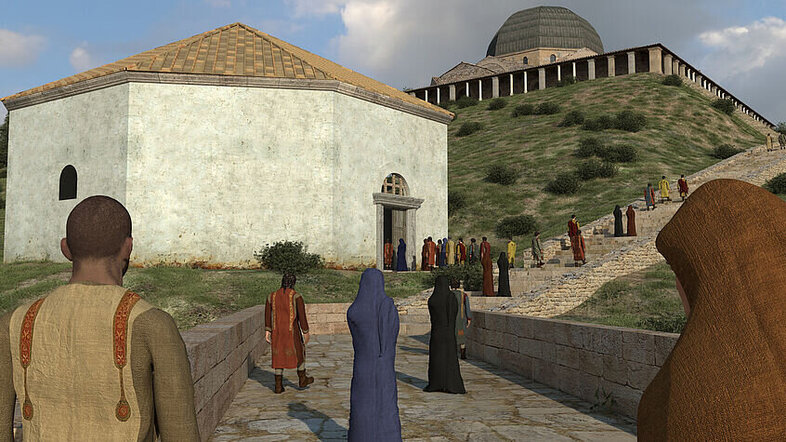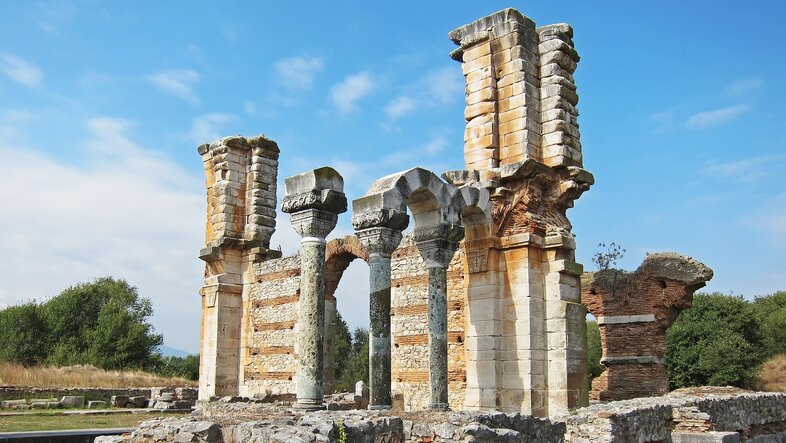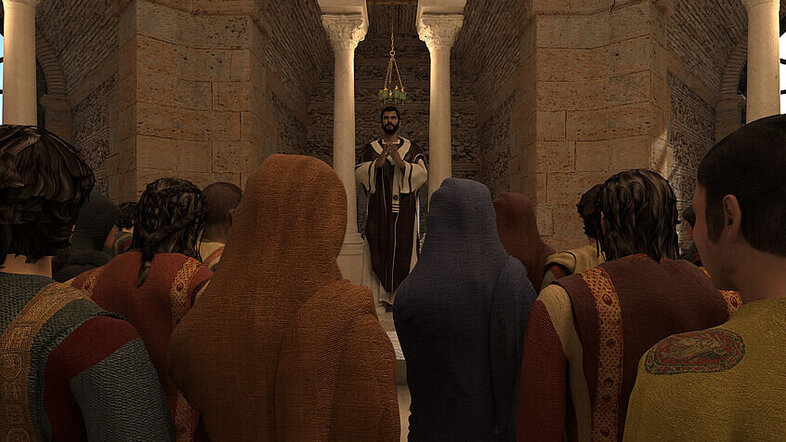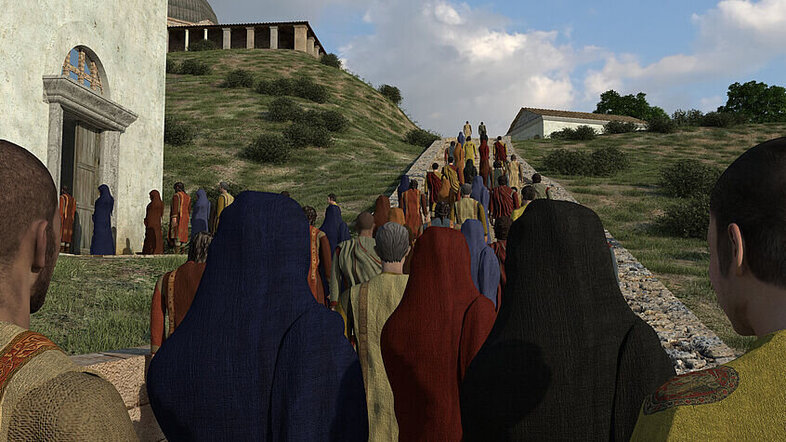Antique PR tools: The making of the Church
Rudolphina: Mr Ivanovici, in your current EU-funded project Crafting Emotion: The Late Antique Panegyris as Embodied Experience, you analyse the Christian ritual "Panegyris". Not all of our readers might be familiar with this term, so could you explain what this antique ritual is about?
Vladimir Ivanovici: A Panegyris is an annual celebration of martyrs, which was typically performed in the first centuries of Christianity. The martyrs were Christians who were persecuted by the Roman state and put to death. Each year, on the date of execution, their communities gathered around the place of execution or the tomb to remember their sacrifice. The ritual was kept quite simple – the attendees would remember the deceased and read a text of what happened.
Rudolphina: With the rise of Christianity in the fourth century, also the Panegyris became a bigger and more important festivity of Christianity. How come?
Vladimir Ivanovici: In the fourth century AD, Christianity was legalised by the Roman Emperors and even favoured by some. At the same time, the heads of Christian communities, the bishops, gained more power. A few of them had received higher education and once they became bishops, they used the accumulated knowledge about perception and cognition that the Greek and Roman world had gathered over hundreds of years to promote the Christian faith. This generation of bishops reshaped the main Christian rituals, including the Eucharistic liturgy, baptism, and the annual celebration of martyrs.
"Roman lawyers and statesmen were taught to appeal to emotions in order to convince their audiences."Vladimir Ivanovici
The question in my research project is how the bishops reused the theoretical knowledge of antiquity, of polytheism, to design the main Christian rituals, because religious leaders of the ancient world had tested various methods of building sacred spaces and of putting people in interaction with the divine for more than thousand years. The bishops took this knowledge and used is as a basis to redesign the main Christian experiences. In the Eastern Orthodox tradition, the liturgy written by these Church Fathers is still being performed today. Their impact on Christianity and on how Christians relate to the divine is incredible and the fact that the experiences they introduced still "work" attests to their careful design.
Rudolphina: The title of your project suggests that the redesigning of Christian rituals by the bishops had a lot to do with emotion?
Vladimir Ivanovici:
I am focusing on how the bishops used emotion to promote Christianity. They knew from their training that you can win an argument and convince somebody by appealing to their emotions. I chose to study the celebration of martyrs as a case study because it was a highly emotional event: An innocent person was tortured and executed for the "crime" of being righteous.
What started out as a simple gathering at the tomb and reading a "dry" account of what had happened, transformed into a multi-day celebration that involved psychosomatic and emotional processes. To find out how the bishops used emotion in this specific event, I have to look at the ritual as an "embodied experience".
Rudolphina: Because we feel emotions with our body?
Vladimir Ivanovici:
It means that body, mind and affect are interconnected. Right now, this is becoming a hot topic in science, because the algorithms used on social media selecting what news of the world we see aim to stimulate negative emotions. This shapes our social behaviour, our interactions and our political decisions.
I use this historical period, this transition from the world-view of antiquity to the medieval world to show how emotions were used by an elite to change society. If we have a clear case study that shows how emotions were used to enact this change in world-view, it is easier for us to understand how emotions are being used to shape our society today.
Rudolphina: How are you going to find out how people reacted to the rituals and even more, what they felt?
Vladimir Ivanovici: Of course, we cannot reconstruct the emotions of individual people. This is something taking place at the intersection of the biological, the social and the personal level. As historians, we can deconstruct the ritual in as many layers as possible and see how each engaged the participants' bodies, mind and affect. You cannot reconstruct what the people felt, so I focus on understanding what the bishops tried to accomplish by comparing what they knew about human perception, the experiences they designed and their goals.
Rudolphina: Can you give a few examples of how bishops created emotions, such as outrage?
Vladimir Ivanovici: Their job was not easy because they had to design an experience that worked for Christians, was interesting for non-Christians and also worked on people who did not understand the sermon because they spoke another language. So, the Panegyris had to engage people also physically and visually. In this context, we find the first detailed representations of torture and death. The bishops would represent images of the martyrs being torn apart, killed, tortured and so on. We know from written sources that people were very moved by this.
"The bishops offered Christian alternatives to polytheistic practices."Vladimir Ivanovici
Martyr shrines were places where polytheism and Christianity competed openly. Sometimes, Christian shrines were built on top of polytheistic shrines or right next to them as a challenge. The bishops offered Christian alternatives to polytheistic practices.
Rudolphina: Talking about emotions: You cooperate with Matthew Pelowski from the Department of Cognition, Emotion and Methods in Psychology. How does your cooperation work?
Vladimir Ivanovici: Matthew Pelowski focuses on the impact of aesthetic experiences, with a focus on art. In my analyses of these ancient experiences I integrate current findings regarding human perception. He guides me through the literature, because there are various branches of cognitive science and it has a dynamic that is different from that in the humanities. Things are evolving really fast in the cognitive sciences. This is also why I chose to do my research here in Vienna, because with Matthew Pelowski I knew that I have a good dialogue partner and the University of Vienna is the main centre for cognitive research in the European Union.
Rudolphina: Thank you for the interview!
Since 2021, he has been conducting the project Crafting Emotion: The Late Antique Panegyris as Embodied Experience – funded by the EU and the University of Vienna – at the Department of Christian History, Art and Archaeology of the University of Vienna. His work explores the ways in which ancient and late antique societies staged encounters with the divine.



